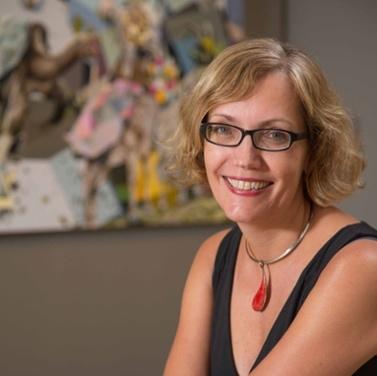Meet Dr. Ena Heller
The political turmoil and unrest of communist Romania became far too much for Dr. Ena’s family to handle.
“Our family was complicated. Both my mom and dad’s sides were involved in politics before the war — before the communists took over — so we were blacklisted from early on. My dad was a historian, and especially in the ‘80s, when there were so many things that were very visibly threatening the legacy and heritage of Romania, he just felt he needed to take a stand. That didn’t go so well for obvious reasons,” said Dr. Ena.
At 23-years-old, she and her family were allowed to leave communist Romania. “They were happy to let us go in a way,” said Dr. Ena. “They didn’t want to have a real dissident on their hands, and that’s how we got out.”

Dirty Water Dogs and Art
Seeking political refuge in the United States, Dr. Ena and her family found themselves in New York. They dove headfirst into a world that “was frightening. It was exciting and terrifying at the same time because it was something I had been waiting for for a very long time,” said Dr. Ena. “One of the most terrifying things was that I didn’t think I would ever be able to go back to Romania, so I had left all my friends and family there, and we didn’t know if we would ever see them again.”
Even after growing up in a large city, New York was intimidating, and the culture shock was unbelievable.
“I was terrified that I wouldn’t be able to function at the level that I was able to function at in Romania,” said Dr. Ena. “I knew very clearly what I wanted to do, and people would say, ‘You want to study art history? What are you, nuts?’” Regardless of the naysayers and language barriers, Dr. Ena went on to not only earn her master’s degree in Art History, but her Ph.D. as well, and she remained in New York for 25 years.

Private Chapels and Papers
Intrigued by religious art, Dr. Ena chose to work on her dissertation in Florence, Italy. She was fascinated by private chapels in Florence in the 14th century, and she examined their evolving architecture as they became more ornate and ostentatious into the 15th century. However, beauty aside, these chapels served a purpose: they were for burials. They were a place for families to hold masses and say prayers for loved ones.
Dr. Ena spent a lot of time in two particular chapels in Florence. One day, she was in one of these chapels taking notes, and a woman came in and kneeled down in front of the altar.
“She started praying, and I instantly felt like I was intruding,” said Dr. Ena. “Here I am with my little notes, taking pictures and measurements, and this woman is there for the reason that the chapel was built in the first place. It was a moment of clarification [for me]; it functions one way for me, but it functions in a completely different way for her. And that’s one of the most important ways that I look at art. We all react differently, we all get different things from it, and you realize you can create multiple stories for multiple people. That’s the beauty of art.”

Something Sacred, Something Else
When Dr. Ena returned from Florence, she spent eight years serving as the Executive Director of The Museum Of Biblical Art, or MOBIA, in New York City.
“Museums tend to take altarpieces out of context. They put them on the wall, and we look at them simply as works of art — and they were not intended to be works of art,” said Dr. Ena. During her time at MOBIA, she worked to provide context to these sacred pieces, teaching people that “yes, they’re works of art, and we love them that way, but let’s understand that they’re also something else.”

Palm Trees and Art
In 2012, Dr. Ena made the move to sunny Winter Park, landing at the Rollins College campus-based Cornell Museum Of Fine Arts as Executive Director. She hosts a wide variety of exhibits and finds her passion in orchestrating exhibitions that inspire and challenge and open our eyes to a whole new vantage point.
“A museum should be a place of education and a place of enjoyment. Art adds so much to one’s life in so many different ways. I always talk about a museum visit as a whole education, because you can see and learn so many different things in a museum, and yet you don’t need a degree, you don’t need to travel far, and you don’t need a ton of money. Some museums are free, like ours,” said Dr. Ena.
About the Author
Tom is the chief coffee brewer, CEO, digital marketing strategist, and kickass content creator for brands across the globe at On Target. He loves nothing more than helping small to medium-sized businesses find their online voice and growing their leads, prospects, and sales.
On Target Digital Marketing is a full-service digital marketing agency located in Orlando, Florida. Through branding, web design, content creation, and social media, we get brands found and talked about online. To learn how we can help your brand grow and thrive, call 407-830-4550 or fill out our contact form. Thanks for reading and sharing!


